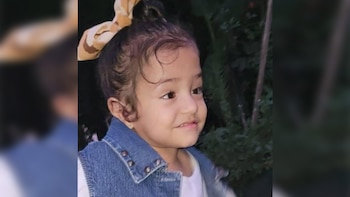
Dozens of environmental defenders and indigenous leaders fall into the hands of mafias dedicated to illegal acts in the Peruvian jungle; Ulises Rumiche Quintimari was no exception. The 39-year-old indigenous leader was returning home last Tuesday on his motorcycle, from San Martín de Pangoa to the native community of San Antonio de Sonomoro, where he lived. This was after meeting with the deputy minister of the Ministry of Women and Vulnerable Populations (MIMP), Grecia Rojas Ortiz.
He heard strange noises coming from around him. Suddenly, a group of people ambushed him and shot him in the head. Without hearing from him all night, the next day, he was found and taken by the authorities to the Satipo morgue.
This environmental leader was a member of the Union Asháninka and Nomatsiguenga Association of the Pangoa Valley and worked as manager of the Native Peoples of the District Municipality of Pangoa in the region Junin.
Rumiche Quintimari was the most recent case after a long list of indigenous leaders and defenders of the Peruvian Amazon who have died at the hands of drug trafficking, logging and illegal mining mafias, who seek to take over these places for their own convenience. Since the pandemic began (March 2020), there have been 19 victims of the jungle in total.

Earlier this month, the president of the Congressional Commission on Andean Peoples, Amazonian and Ecology, Margot Palacios, asked the prosecutor's office and the Ministries of the Interior and Justice for a detailed report on the investigations following these murders.
Going back 9 years (2013), the number would rise to 89 murders of environmental defenders and indigenous leaders in the country. This is an estimate of some NGOs, since there is no official record by the State that is detailed.
For her part, the specialist in institutional management of the NGO Law, Environment and Environmental Resources, Aida Gamboa, said that until that time (2018) there were already 70 indigenous leaders killed since 2013.
The report “Global Witness's Last Line of Defense” specified that in 2020 alone, six environmental defenders were killed in Peru and one of the main causes was illegal logging, all this despite the fact that the country was in national quarantine due to COVID-19. Among them are Arbildo Meléndez Grandes, Gonzalo Pío Flores, Jorge Muñoz Saavedra, Lorenzo Caminti, Roberto Carlos Pacheco and finally Santiago Vega Chota.

CASOS NO RESUELTOS
The murder of Rumiche Quintimari generated great indignation in the country, so the vice-president of the Association for the Development of the Peruvian Jungle, Miguel Guimaraes, assured El Comercio that “when an indigenous person dies, it becomes a two-day statistics and publication image and finally that case is not resolved.”
He added that the number of forest defenders killed could be much higher, since many are not counted by the different government agencies.
“I can confirm that there are so many defenders who die protecting their lands and forests. They are those who are on the front line, who cannot have access to make complaints, so they cannot be filed with the competent authorities,” he said.
After the murder, MIMP spoke out in a statement, regretted the crime and asked that the case be promptly investigated.
“Hours after meeting with the Deputy Minister of Vulnerable Populations, when she was returning to her community, Pangoa's Manager of Indigenous Peoples, Ulises Rumiche, was found lifeless and with signs of being killed. We demand investigation and punishment of those responsible,” they published on their official Twitter account.
On the other hand, the aforementioned newspaper contacted the entity and they mentioned that no further information could be provided on the case during and after the vice-president of MIMP held the meeting with the indigenous leader.
KEEP READING
Últimas Noticias
Debanhi Escobar: they secured the motel where she was found lifeless in a cistern

The oldest person in the world died at the age of 119

Macabre find in CDMX: they left a body bagged and tied in a taxi
The eagles of America will face Manchester City in a duel of legends. Here are the details

Why is it good to bring dogs out to know the world when they are puppies




